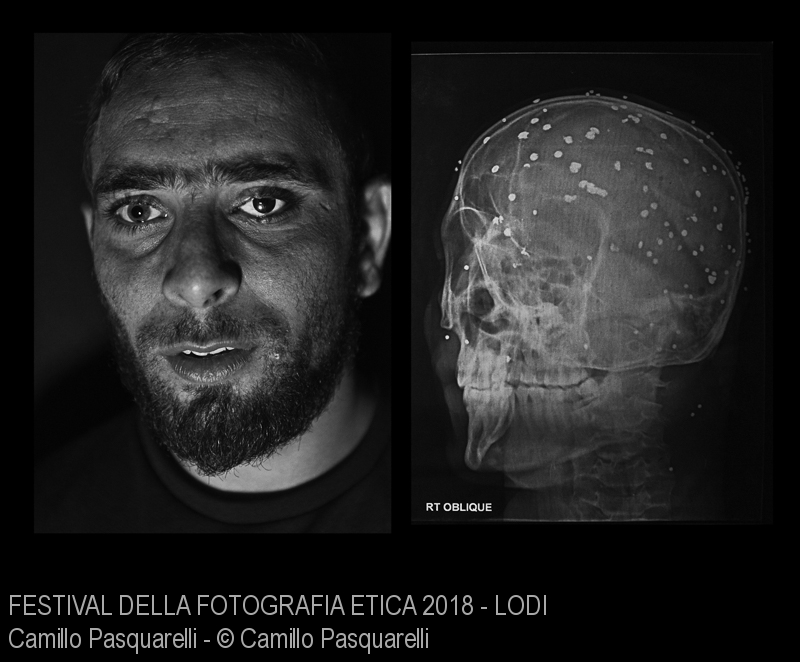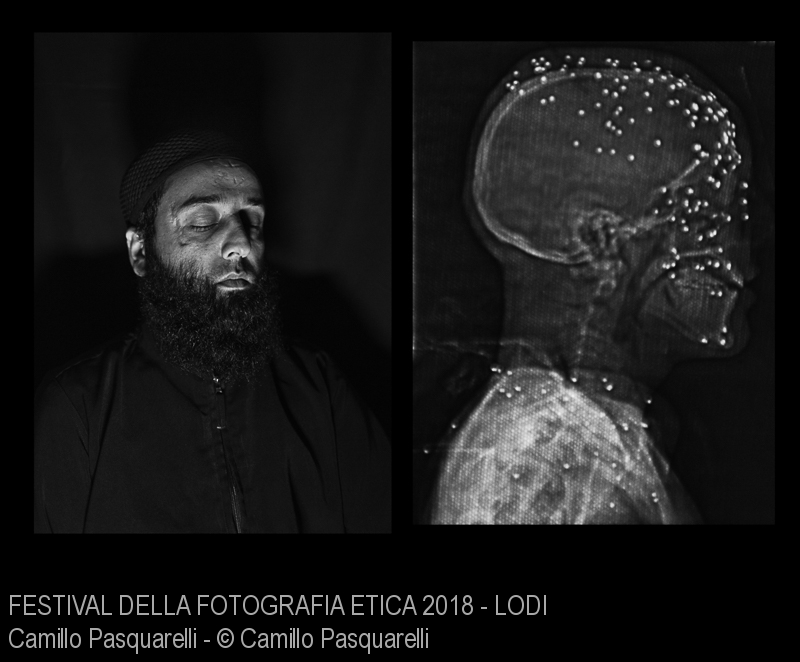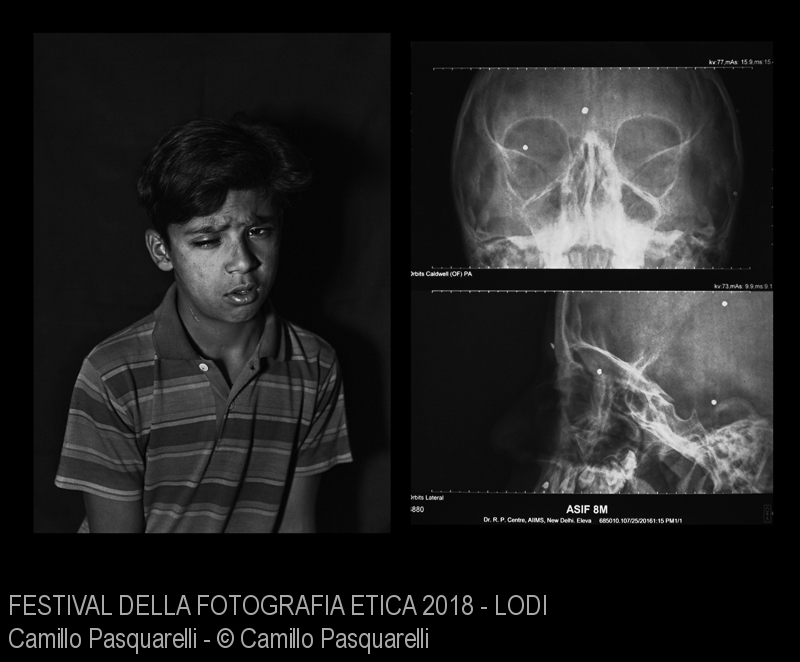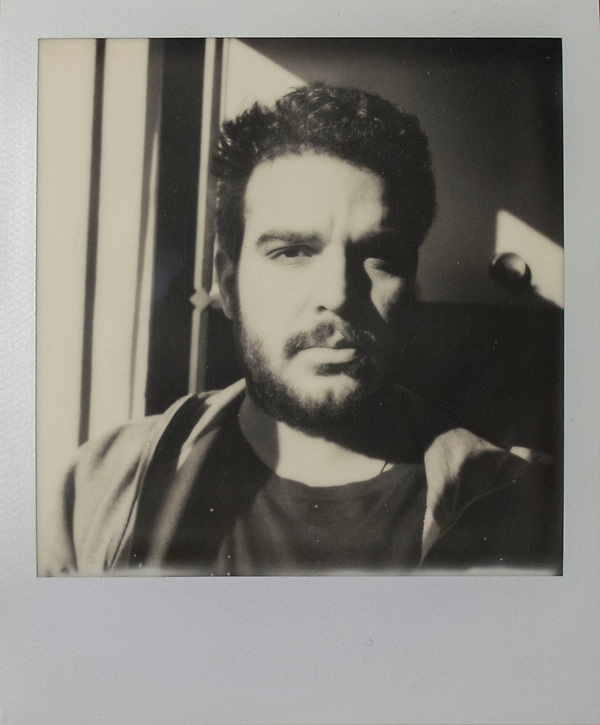<< The human and science, war and “collateral effects”, permanent wounds and medical science. The tragedy of a single human being is amplified and made tragically evident because of cold medical technology.
This narration is strengthened by the brilliant and profound use of the diptych. >>




